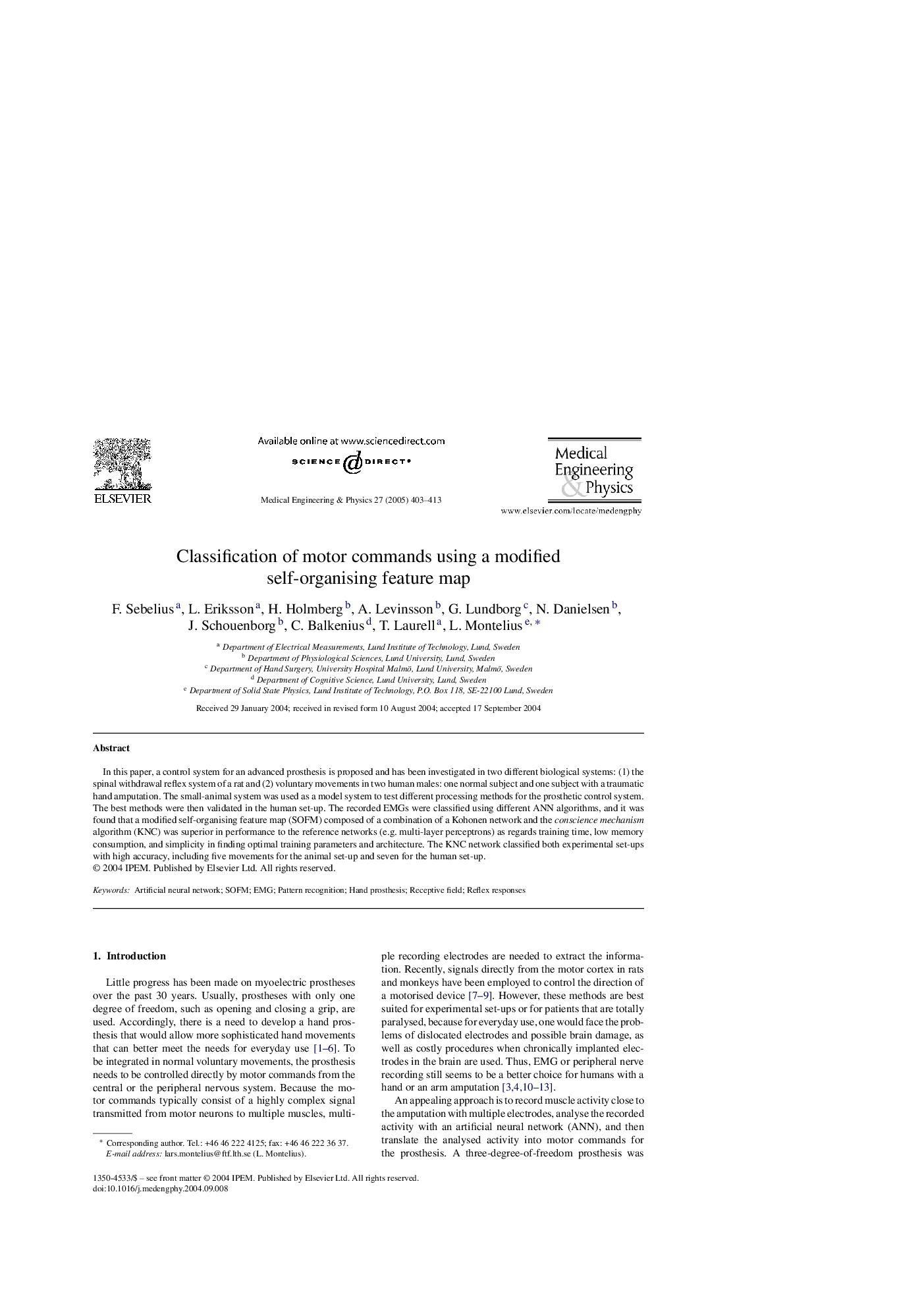| Article ID | Journal | Published Year | Pages | File Type |
|---|---|---|---|---|
| 10435202 | Medical Engineering & Physics | 2005 | 11 Pages |
Abstract
In this paper, a control system for an advanced prosthesis is proposed and has been investigated in two different biological systems: (1) the spinal withdrawal reflex system of a rat and (2) voluntary movements in two human males: one normal subject and one subject with a traumatic hand amputation. The small-animal system was used as a model system to test different processing methods for the prosthetic control system. The best methods were then validated in the human set-up. The recorded EMGs were classified using different ANN algorithms, and it was found that a modified self-organising feature map (SOFM) composed of a combination of a Kohonen network and the conscience mechanism algorithm (KNC) was superior in performance to the reference networks (e.g. multi-layer perceptrons) as regards training time, low memory consumption, and simplicity in finding optimal training parameters and architecture. The KNC network classified both experimental set-ups with high accuracy, including five movements for the animal set-up and seven for the human set-up.
Related Topics
Physical Sciences and Engineering
Engineering
Biomedical Engineering
Authors
F. Sebelius, L. Eriksson, H. Holmberg, A. Levinsson, G. Lundborg, N. Danielsen, J. Schouenborg, C. Balkenius, T. Laurell, L. Montelius,
